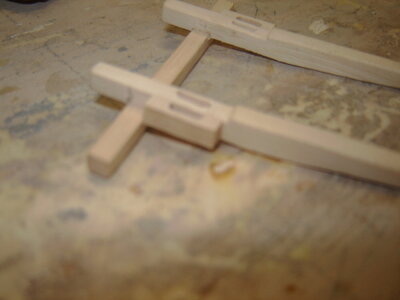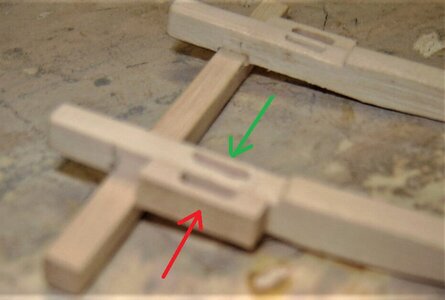I'm building some bitts and other parts that require some sheaves put into a timber. See picture. I've got no problem building the parts except for drilling the hole for the sheave axle/pin. Is there a really slick method of getting that thing right in the middle lengthwise so that the sheave doesn't bind up on one end or the other?







